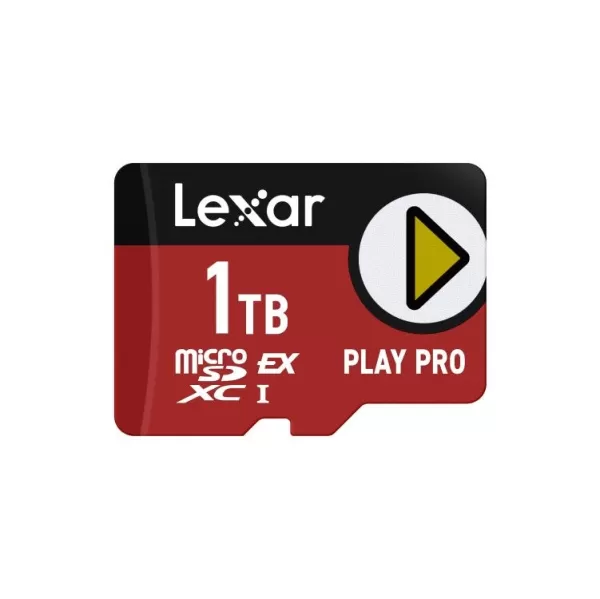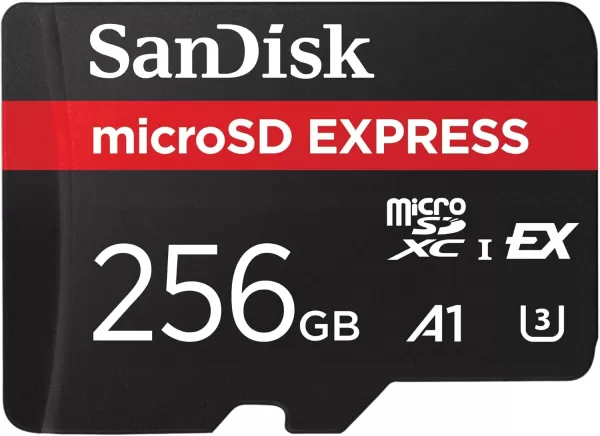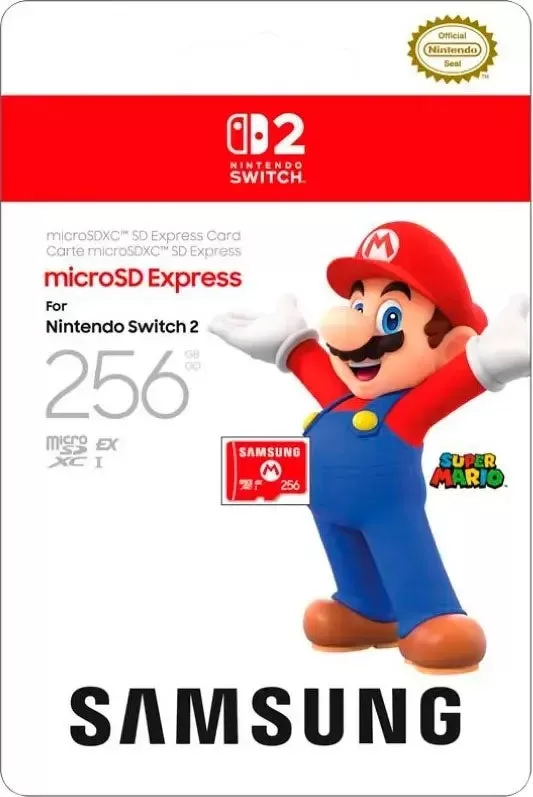The Nintendo Switch 2 is launching soon, offering just 256GB of internal storage. To enjoy a wide range of games without constantly uninstalling and reinstalling, expanding storage is essential. Unlike its predecessor, the Switch 2 requires MicroSD Express cards, which provide faster speeds but come at a higher cost compared to standard UHS-based SD cards.
While MicroSD Express cards have been available for some time, their adoption has been limited, mainly among creative professionals. With the Switch 2’s imminent release, expect a surge in available Express cards to meet demand.
Since the console isn’t out yet, these MicroSD Express cards for the Nintendo Switch 2 haven’t been tested. Still, they come from trusted manufacturers known for producing reliable storage solutions.
Why Choose MicroSD Express?
The Nintendo Switch 2 mandates MicroSD Express cards for storage expansion, a departure from standard MicroSD cards. While Nintendo hasn’t detailed its reasoning, the decision likely stems from the need for faster storage performance.
The console’s internal UFS flash storage, similar to that in modern smartphones, outperforms the eMMC drive in the original Switch. Nintendo likely wants developers to rely on consistent high-speed storage, whether games are stored internally or on an expansion card.
Regular MicroSD cards are limited to storing screenshots and videos from the original Switch. Unlike the PS5, which supports slower external drives for older games, the Switch 2 requires MicroSD Express cards for all storage expansion needs.
1. Lexar Play Pro
Top-Performing MicroSD Express Card

Lexar Play Pro
1See it at B&H Photo and Video
PROS1TB capacityFastest MicroSD Express card availableCONSCurrently the most expensive optionAmong available MicroSD Express cards, the Lexar Play Pro stands out for its speed and capacity. With read speeds up to 900MB/s and up to 1TB of storage, it’s the top choice for Switch 2 users. However, high demand has made it difficult to find in stock.
As excitement for the Nintendo Switch 2 subsides and stock stabilizes, availability should improve. For now, the 1TB Lexar Play Pro is worth watching for, especially if it becomes available at retailers like Adorama, where it’s currently on backorder until July.
2. SanDisk MicroSD Express
Most Accessible MicroSD Express Card

SanDisk MicroSD Express
1See it at Amazon
PROSWidely availableTrusted brandCONSLimited to 256GB capacitySanDisk is a leading name in SD card manufacturing, and its MicroSD Express card is a solid option for Switch 2 users. Offering up to 256GB of storage, it effectively doubles the console’s internal capacity, though it lacks a unique name like the Lexar Play Pro.
With read speeds of up to 880MB/s, it’s slightly slower than the Lexar but still delivers reliable performance for games like Mario Kart World. Its widespread availability makes it an easy choice for those looking to expand storage immediately.
3. Samsung MicroSD Express for Switch 2
Nintendo’s Official MicroSD Express Card

Nintendo Samsung MicroSD Express
0See it at Best Buy
PROSOfficially endorsed by NintendoMade by reliable SamsungCONSLimited specs availableSamsung’s MicroSD Express card, sold directly by Nintendo, carries the console maker’s endorsement. However, details about its storage capacity and speeds remain scarce, with only a 256GB model confirmed at retailers like Nintendo and GameStop.
While the official branding offers reassurance, the lack of clear specifications makes it a less certain choice. More details will be shared as they become available from Samsung.
MicroSD Express FAQ
How Fast Is MicroSD Express?
MicroSD Express cards significantly outperform traditional SD cards, thanks to their use of PCI Express 3.1, the same interface as PC SSDs. While full-sized SD Express cards can reach speeds up to 3,940MB/s, MicroSD Express cards max out at 985MB/s, still a major leap over the original Switch’s MicroSD cards.
How Long Do MicroSD Express Cards Last?
Like all SD cards, MicroSD Express cards aren’t designed for long-term data storage and have a limited lifespan. Depending on usage and environmental conditions, they typically last 5-10 years. Always back up critical data to ensure it’s preserved.




 LATEST ARTICLES
LATEST ARTICLES 










